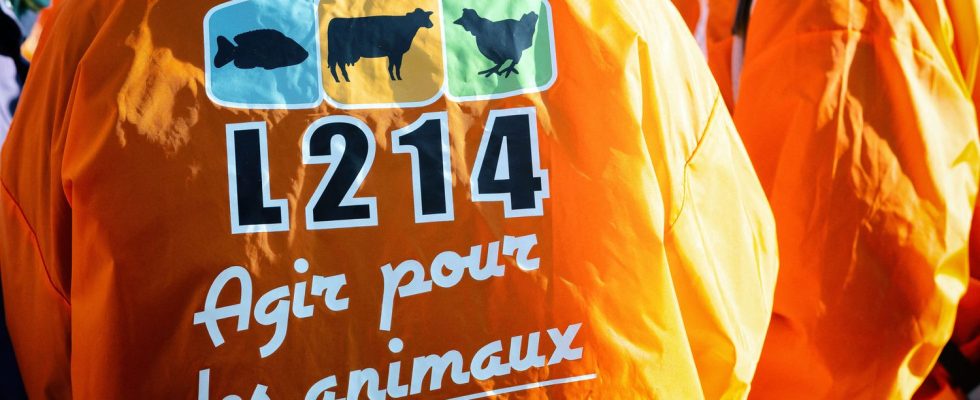Founded in 2008, L214 made itself known by publishing shocking videos of animal abuse. The Alès slaughterhouse affair in 2015 will allow it to be taken seriously by state services and the justice system. Since then, she has been a key player in the world of breeding.

Published
Update
Reading time: 5 min

A new animal abuse case before the courts. The trial of a pig farm was held on Thursday March 21 before the Auxerre judicial court. The judgment was reserved. Once again, it was following the revelations of L214 that the investigation was opened. In a few years, this association for the defense of farmed animals has become known to the general public thanks to its shocking videos filmed on hidden cameras in slaughterhouses or farms.
This shock strategy is used to change mentalities and practices. For example, in 2016 in Gard, the association published videos of animal mistreatment in the Vigan slaughterhouse. Stéphane Thiry is a breeder. At the time, he collaborated with this slaughterhouse, without suspecting what was behind the scenes: “We were quite shocked because we were proud of our little country slaughterhouse, as we called it. And then, we imagined that everything was going for the best in the best of all possible worlds. We realized that ultimately, even in our slaughterhouse, there could be abuses.”
A slaughterhouse threatened with closure has now become a model
On site, L214’s video had the effect of a bomb. The slaughterhouse is threatened with closure, so the breeders decide to take matters into their own hands. They create a cooperative. From now on, it will be them, the breeders who will take care of the slaughter. Stéphane Thirry will take the helm of this new structure in 2018.
“This slaughterhouse has gradually become an extension of our operationshe explains, that is to say, we handle and consider the animals in the slaughterhouse as we take them into consideration on our farms. So in terms of rates too, that’s for sure, it’s not at all the same rates as in a slaughterhouse, let’s say large ones. And then we regularly organize visits, we receive people and we wanted this slaughterhouse to be quite transparent.” The slaughterhouse has become a model today, cited as an example by L214.
The tipping point in 2015
The Vigan slaughterhouse affair dates back to 2016, at which time L214 became a key player in the animal cause. The association was founded in 2008 and remained in the shadows for several years. Until the tipping point of 2015 with the Alès slaughterhouse. L214 publishes images of dying horses, pigs and calves. The affair was widely covered by the media. It is at this moment that L214 gains notoriety and above all legitimacy. “Somehow, this was recognition in several respects of the work of the associationaccording to its co-founder Brigitte Gothière. Politicians take images seriously. At the time, these questions had not yet been brought before the courts. When a complaint was filed, several prosecutors rather dismissed it. But we see today, investigations are taken more seriously. First at the slaughterhouse level, then at the farm level.”
“The reputation of L214 today makes it possible to attract the attention and obtain that of magistrates and state services. These are things that we did not necessarily have at the very beginning. We showed images and the veterinary services sometimes didn’t even respond to us.”
Brigitte Gothière, co-founder of L214at franceinfo
Since 2015, L214 has accumulated victories: dozens of partial, and sometimes even total, closures of targeted livestock or slaughterhouses, requests for compliance, and legal convictions. And above all, the association has been at the origin of profound transformations in several giants of the agri-food industry. The Hénaff company, for example, which produces pâtés, committed following an L214 investigation to drastically change the breeding conditions of its pigs. Regarding eggs from hens raised in cages, 150 companies have decided to no longer sell them. Here again, after the work of the association.
A militant and criticized association
But despite all this progress, L214 is still far from its primary objective, namely the complete cessation of meat consumption. On this question, the results are still awaited, despite the weight of the association – 50,000 members, around a hundred employees – and despite its media and political relays. Meat consumption in France has even increased by 3% over the last ten years. This is why L214 has set itself a new, more reasonable objective: a halving of meat production by 2030.
L214, these are therefore political convictions on the one hand, and on the other investigations which aim to be impartial. A mixture of genres pointed out by lawyer Antoine Tugas. He defended three employees of the Mauléon slaughterhouse in the Pyrénées-Atlantiques. In this case, according to him, L214 published videos to shock and not to inform. “The case could have been handled in a very different way if a few basic precautions had been taken. We can recall, anecdotally, that at the time these images were taken, it was the Easter period. Cadences in relation to the slaughter of sheep are very important, with chronic understaffing in this slaughterhouse with machines that function poorly, this is a given today”, he assures.
“So, the first precaution would have been to consider that these images deserved at the very least analysis and perspective. That’s investigation, journalism or whistleblowing. We create publicity effects by explaining that there are acts of cruelty in the Mauléon slaughterhouse and we throw out images saying: ‘Look at us, we’re washing our hands of it now, we’ve done our job.’ And there, indeed, we do not have this necessary responsibility in relation to the virtuous side that we display.” In this case, the three employees were ultimately sentenced to simple fines. The court found that the fault was mainly attributable to the employer.
